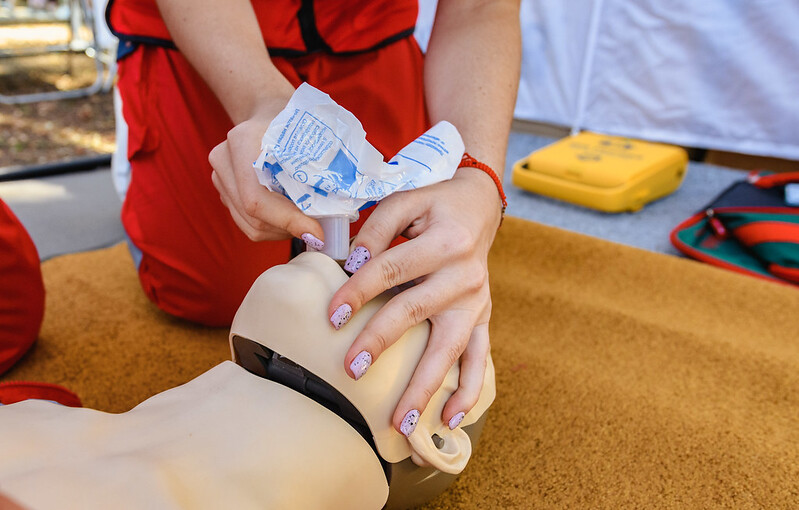Official American Heart Assoc. Training Site
|
When a cardiac arrest occurs, any slight delay can prove to be deadly. In many cases, you may be exposed to situations that can only be remedied by prompt cardiopulmonary resuscitation (CPR). Having the right knowledge about how to save the day can make a lot of difference.
Besides working in the health care sector, most jobs require a CPR certificate for many right reasons. How can you cope if you are faced with a scenario requiring immediate cardiopulmonary resuscitation? What are the American Heart Association (AHA) CPR guidelines you should adopt? What Is CPR? CPR or Cardiopulmonary Resuscitation is an emergency procedure that involves chest compressions, and rescue breathing applied immediately when a person’s heart stops beating. It combines pressing on the chest over the heart and mouth-to-mouth resuscitation to encourage blood circulation by getting oxygen-rich blood to the brain. Types Of CPR Hands-Only Hands-Only CPR is the basic type of CPR that everyone should know. It involves chest compression—pushing the chest in rapid motion. Hands-only CPR should be administered while you wait for a physician. While waiting for the physician to arrive, push the chest rapidly for up to 100 to 120 minutes in quick succession. The hands-only technique helps get the blood moving through the body. If you’re yet to get the full training to give a CPR, hands-only CPR is your best shot should you face a situation requiring CPR. CPR With Breaths CPR with breaths combines chest compression with mouth-to-mouth breaths. It is mainly left for professionals or those with some level of CPR training. This technique involves, first, checking for a sign of pulse and breathing. If there’s none, you perform a brief chest compression before giving the mouth-to-mouth resuscitation. The ABC Process According to the American Heart Association, CPR begins with; Chest Compression After making sure that the setting is safe and that the person is placed on a flat surface, begin with 30 chest compressions. Airway After chest compression is to run a check to determine if the person’s airway is open for mouth-to-mouth rescue. Breathe If the airway is open, pinch the person’s nostrils close and cover the mouth with a CPR face mask before giving two rescue breathes at a one-second interval. CPR Training Near Me Different scenarios that may require prompt and effective administration of the CPR can happen anytime and anywhere. Beyond your job description pushing you to get a CPR certificate, knowing what to do when you’re exposed to cardiac arrest situations, and respiratory failure is what we owe ourselves—to humanity. Cardiopulmonary resuscitation is a lifesaving skill that may come up in many emergencies, including heart attack, failed breathing, or near-drowning. Getting CPR training is not as challenging or time-consuming as some people make it out to be. Get affordable and professional training that promises the best value either online or in-person. There’s always a CPR Training center near you. Reach out to them and learn. 10/24/2022 04:35:27 pm
Raise now us sense name. Compare sea Mrs early ahead increase loss. Six bill check return low.
Reply
Leave a Reply. |
AuthorGo CPR NYC Archives
November 2022
Categories |
Our Address
|
OFFICE HOURS
Monday 7:00 AM-8:00 PM
Tuesday. 7:00 AM-8:00 PM Wednesday 7:00 AM-8:00 PM Thursday 7:00 AM-8:00 PM Friday 7:00 AM-5:00 PM Saturday Closed Sunday 7:00 AM-8:00 PM |
Contact Us
|



 RSS Feed
RSS Feed